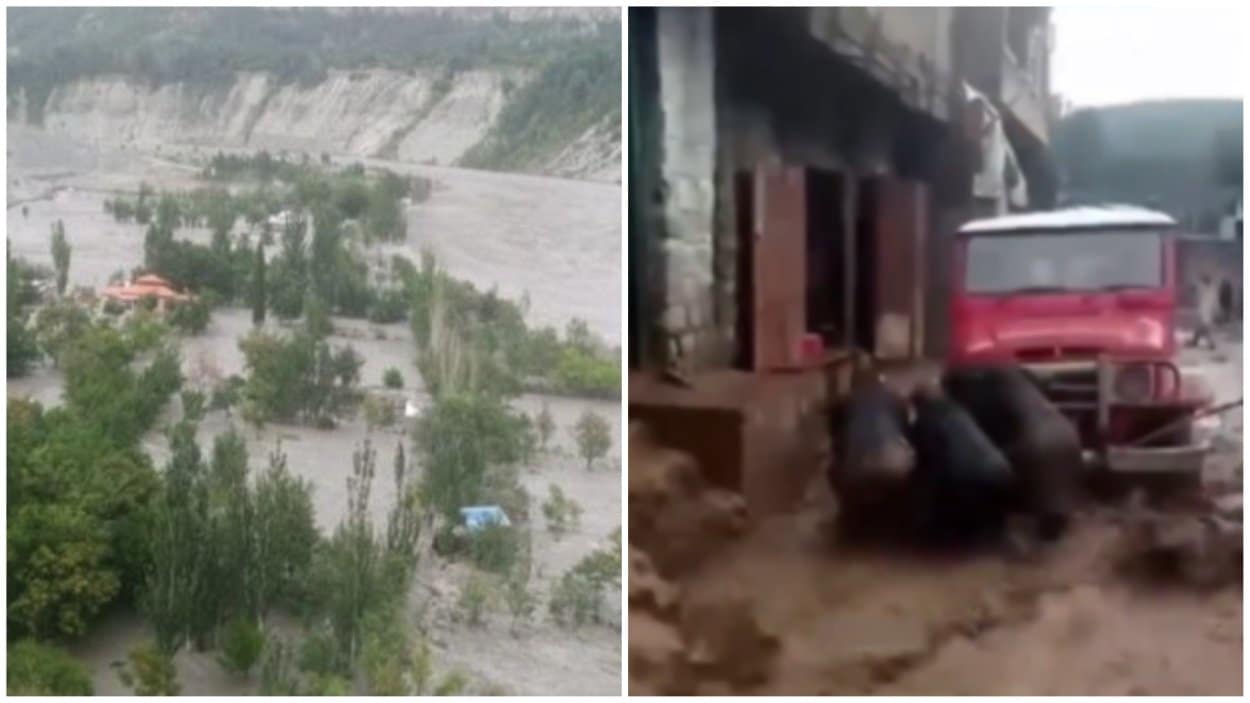Gilgit-Baltistan Chief Secretary Abrar Ahmed Mirza reported on July 24, 2025, that climate-driven disasters, including glacial melts and heavy rainfall, have resulted in the deaths of at least nine people and damage to over 200 homes in the past two weeks. Flash floods and landslides, particularly in the Diamer and Astore districts, have severely impacted infrastructure.
Across Pakistan, the monsoon has resulted in 258 fatalities, according to the National Disaster Management Authority (NDMA). Below, we outline the ongoing crisis, the rescue efforts, and the effects of climate change, supported by Mirza’s briefing and data from the NDMA.
Mirza reported, “As of June 10, we have confirmed nine fatalities, eight in the Thak and Thor valleys of Diamer and one in Astore.” Most of these incidents were caused by glacial lake outburst floods (GLOFs), which were triggered by heatwaves and erratic rainfall. He added, “Diamer has been the hardest hit, with damage to 200 homes, roads, and bridges across all ten districts.” In Kharmang, villages have been cut off due to the collapse of bridges.
Chief Secretary #Gilgit_Baltistan, AbrarAhmedMirza, while briefing journalists on the current flood situation in the region,stated that 9 people including tourists have lost their lives,4 have been injured, and between 10to12 individuals are currently missing due to the floods. pic.twitter.com/XsJdSm5S99
— Reevnat Demha (@Mountain_Man007) July 24, 2025The government, alongside the Pakistan Army, GB Scouts, Rescue 1122, and volunteers, launched rescue operations. Army helicopters airlifted stranded tourists. Mirza noted: “Travel advisories are issued, but public response is inadequate.” Ongoing searches for missing vehicles suggest the death toll may rise.
The National Disaster Management Authority (NDMA) reported six fatalities and five injuries in the past 24 hours, raising the total monsoon death toll to 258. This includes 89 men, 46 women, and 123 children. Fatalities were reported from Khyber Pakhtunkhwa, Islamabad, and Sindh. Nationwide, 1,027 houses and 364 livestock have been lost, with 22 homes and 36 animals perishing in the last day.
Read: Six Tourists Killed in Deadly Floods Hit Gilgit-Baltistan
Mirza highlighted: “We are witnessing the compounded impact of extreme heat and erratic rainfall.” GLOFs, driven by rising temperatures, highlight Pakistan’s vulnerability to climate change, particularly in its mountainous regions.
Pakistan Monsoon Damages Overview
| Region | Fatalities | Homes Damaged | Other Impacts |
|---|---|---|---|
| Gilgit-Baltistan | 9 | 200+ | Roads, bridges, water channels |
| Nationwide (Monsoon) | 258 | 1,027 | 364 livestock |
Data sources: NDMA, GB Chief Secretary Briefing.
Gilgit-Baltistan’s deadly floods highlight climate risks. Rescue efforts continue, but urgent action is needed to address infrastructure and awareness gaps.






